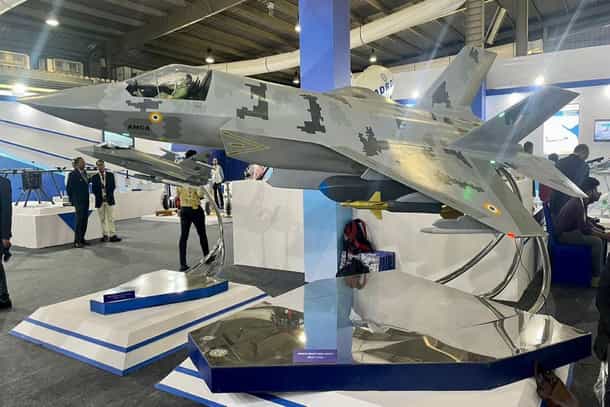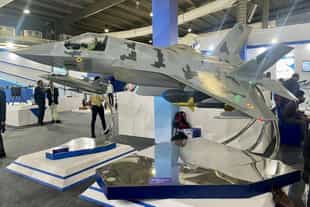Defence
AMCA At Aero India 2023: How The Building Blocks Of India's Stealth Fighter Are Taking Shape
Ujjwal Shrotryia
Feb 14, 2023, 05:32 PM | Updated 06:01 PM IST
Save & read from anywhere!
Bookmark stories for easy access on any device or the Swarajya app.


The building blocks of India’s first fifth-generation fighter aircraft, the Advanced Medium Combat Aircraft (AMCA), have begun to take shape.
Here are some components that have been displayed in Aero India 2023.
The Internal Weapons Bay
The internal weapons bay allows the fifth-generation fighter to carry bombs and missiles in a concealed state, which makes it harder for enemy radars to detect the aircraft.
Internal Weapon Bay System for #AMCA showcased at #AeroIndia2023#IADN pic.twitter.com/SO3Prvc3jJ
— Indian Aerospace Defence News (IADN) (@NewsIADN) February 13, 2023
Conformal Antennas
A fighter jet carries an array of antennas for communication and detection. These antennas protrude from the jet's surface, which increases the chances of detection by enemy radar. Conformal antennas are designed to conform with the jet's airframe, thus increasing stealthiness.
And thd building blocks for India's fifth-generation fighter effort and UCAV programme are falling into place now. Indigenous conformal sensors so crucial to creating a low-observable aircraft are shown here.#AeroIndia2023 pic.twitter.com/S67ZBwmrKZ
— Delhi Defence Review (@delhidefence) February 13, 2023
Actuators and other mechanical systems
Mechanical parts like actuators, built using advanced additive manufacturing processes (3D manufacturing), have also ben displayed at Aero India 2023.
An indicator of the work going on for Project AMCA. Building blocks for the stealth fighter using newer technologies and manufacturing processes. pic.twitter.com/f3alVJ9zna
— Delhi Defence Review (@delhidefence) February 13, 2023
Meanwhile, the Aeronautical Development Agency (ADA) has also released notifications inviting private manufacturers to be a part of the AMCA program.
The industrial partners are supposed to bring not only investment but also advanced manufacturing technologies for the production of AMCA.
On the other hand, the induction timelines of the AMCA induction are also getting clearer.
Just yesterday (13 February), DRDO chief Samir Kamat gave an interview where he explained the development and induction timelines of AMCA.
#WATCH | DRDO chairman Dr Samir V Kamat says, "I would say that LCA Mk-2 should start getting ready by 2028 for induction. AMCA phase 1 with GE F414 engines should start flying in about 10 yrs - the first flight will happen in about 7 yrs, but the induction may take 10 years." pic.twitter.com/ZESgfhcFRd
— ANI (@ANI) February 14, 2023
Kamat said that the first flight of Phase-1 AMCA with the American GE-F414 engine will happen after seven years. The induction will take another three years, extending the timeline further to the 2032-2033 timeframe.
The timeline for Phase-2 of AMCA, Kamat said, could only be predicted after the partner for the co-development of the new higher-thrust engine is selected.
Staff Writer at Swarajya. Writes on Indian Military and Defence.





